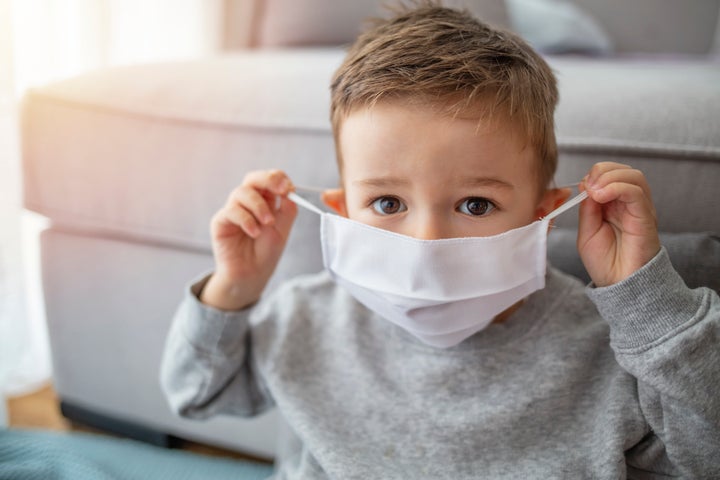
Before the school year began, a lot of parents had a lot of questions about whether their children would be willing and able to a face mask for hours on end.
Many have been pleasantly surprised by how much their children have embraced mask-wearing as a simple fact of life during COVID-19.
And yet it can still be difficult to keep kids from touching their masks all the time, particularly younger children who are understandably less enthusiastic about keeping their mouths and noses covered for extended periods of time. (The Centers for Disease Control and Prevention recommends masks for kids age 2 and up.)
So what about those kids — the frequent face touchers? Is wearing one still helping keep them and others safe?
Doctors say yes. And they’re pretty emphatic about it.
“Masks work as long as they’re covering the mouth and nose. That’s the main way that the virus exits the body and enters the body,” said Dr. Susan Coffin, clinical director of the infectious diseases division with Children’s Hospital of Philadelphia.
Plenty of research supports mask-wearing (as does just about every major medical and public health group). One particularly compelling study that looked at COVID-19 spread after mask mandates in 15 states and Washington D.C., found that within three weeks of masks being required, the daily growth rate in COVID cases dropped by 2 points.
There aren’t studies comparing perfect mask-wearing with less-than-perfect mask-wearing, but when kids touch theirs a lot, the concern is basically twofold. One: they might have accidentally moved it so that it’s no longer fully covering their nose and mouth, Coffin explained. And two: they may have touched a surface with the virus on it, so when they fiddle with their mask, they’re accidentally putting themselves at greater risk.
But crucially, Coffin called this second concern “theoretical.” Researchers have learned an enormous amount about how COVID-19 spreads over the past six months, and they know now it is generally not via surfaces. That’s different from other viruses, like those that cause the common cold. They’re much more likely to be spread through commonly touched surfaces, like doorknobs, school supplies, etc., which is why your child might be wear a mask at school and nonetheless come home with the sniffles.
“'My mask protects you, your mask protects me.' The biggest risk when kids are touching their masks frequently is if somebody else isn’t wearing one.”
- Dr. Rebecca Carter, University of Maryland School of Medicine
“Truly it seems like you would have to touch a surface that somebody else had recently directly sneezed onto and then immediately put your hands right on your mouth or face,” said Dr. Rebecca Carter, an assistant professor in the department of pediatrics with the University of Maryland School of Medicine, on the possibility of spreading COVID-19 via high-touch surfaces at school.
“Also, if everybody is wearing their mask, you’re giving a lot more protection,” she added. “The common phrase has been: ‘My mask protects you, your mask protects me.’ The biggest risk when kids are touching their masks frequently is if somebody else isn’t wearing one.”
Parents should try to work with their children to make sure they’re not touching their face masks more than they need to throughout the day. An easy way to do that is to model good mask-wearing: Don’t pull your mask down constantly when you need to talk, Carter said. Be mindful of not moving it around on your own face too much. Be an enthusiastic mask wearer so that your child gets on board. Also, talk to them about how to take a mask on and off safely, and get them a mask that’s relatively comfortable for them. That could take a bit of trial and error.
Then remember that mask-wearing on its own is not enough to prevent the spread of COVID-19. Kids must maintain social distance to the extent that’s possible given that they’re, well, kids — and do a whole lot of hand-washing. Schools are being pretty good about those measures, which could help explain why there have been thousands of cases of COVID-19 among kids and students in the U.S. this fall, but there’s not much evidence it is spreading within the buildings and classrooms themselves.
At this point, it appears that children are more likely to get COVID-19 from others in their home or from get-togethers outside of school, Coffin said.
“We must mask. And do hand hygiene. And do distancing. And do screening. And quarantine when exposed,” Coffin said. “It’s all part of a package.”